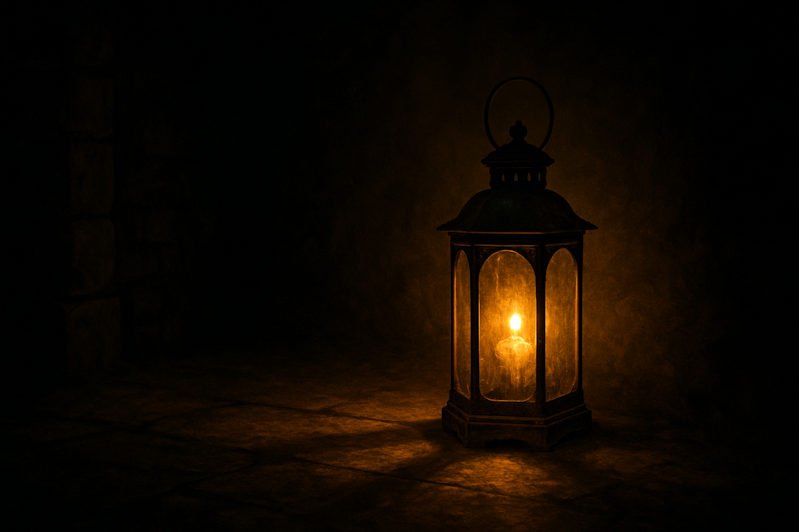
Lantern symbolism: powerful meaning beyond light and shadow (2025)
Lantern symbolism has fascinated cultures for centuries. A lantern is more than a source of light; it carries layers of meaning that reach far beyond its practical use. From temples in Asia to quiet doorways in Europe, the lantern has always stood as a silent guide — a reminder that illumination is not just physical, but also spiritual and emotional.
The power of a lantern lies in its duality. Light brings safety, hope, and insight, while shadows remind us of mystery, fear, and the unknown. Together they create balance. This is why lanterns often appear in rituals, literature, and even modern design: they reflect our constant search for guidance in darkness and for meaning in the light.
In this article, we will explore how lantern symbolism evolved across history and cultures, what it teaches us about light and shadow, and how you can weave its powerful meaning into your own life. Whether you see it as a beacon of hope, a tool for storytelling, or a decorative object with hidden depth, the lantern remains a timeless symbol worth understanding.
Lantern symbolism in history and culture
Lantern symbolism has roots that stretch across centuries and civilizations. While every culture shaped the lantern in its own style, the underlying meanings often overlap: guidance, protection, and the illumination of both space and spirit. By looking at history, we can see how a simple object became a universal emblem of hope and presence.
In ancient China, lanterns were more than decorations — they marked celebrations, honored ancestors, and symbolized the guiding of spirits. The Lantern Festival itself remains one of the most vibrant cultural expressions of light overcoming darkness. Each lantern carried a wish, a story, or a prayer, floating skyward or glowing in streets as a collective act of connection.
In the Middle East and Mediterranean, lanterns held practical and spiritual roles alike. They lit narrow streets, temples, and sacred gatherings, becoming signs of welcome and protection. During Ramadan, for example, the fanoos lantern became a symbol of joy, family, and shared faith.
Europe added its own layer of meaning. Lanterns on doorsteps guided travelers safely through the night, while in literature and folklore, they often represented wisdom, secrecy, or the fragile spark of truth carried through uncertain times. Monasteries and churches also used lanterns as ritual tools — reminders that divine presence burns steadily even in silence.
These examples show how lanterns were never “just objects.” Their presence shaped cultural memory and collective identity. Whether carried in festivals, hung as guardians, or described in stories, they symbolized the meeting point of light and shadow. Across continents, lantern symbolism taught people to see light not as the absence of darkness, but as its companion — together creating meaning, balance, and direction.

Uncover
The Firefly Inn
Behind its lantern light, secrets wait to be revealed. Step closer, and choose your path into the unknown.
Light vs shadow: metaphorical and psychological meanings
Lantern symbolism is powerful because it speaks in contrasts. A lantern never shines in isolation; its glow exists only in relation to the surrounding darkness. This interplay between light and shadow mirrors the way we experience safety, fear, hope, and mystery in our own lives.
Light represents guidance, clarity, and renewal. When a lantern is lit, it creates a circle of safety where people can gather, talk, or rest. Across traditions, this light symbolizes wisdom, protection, or even divine presence. Psychologically, light is linked to awareness — the moment we “see” something clearly, or find direction in confusion. It carries the comfort of knowing we are not alone in the dark.
But the shadow is equally important. Every lantern casts darkness behind it, reminding us of the unknown and of what remains hidden. In stories and rituals, the shadow represents challenge, danger, or the parts of ourselves we are hesitant to confront. Rather than being purely negative, these shadows invite introspection. They make the light meaningful by contrast.
This duality is why lanterns often appear in literature and art. A hero carrying a lantern is not just finding a path; they are symbolically facing fear, seeking truth, or guiding others. In religious ceremonies, the lantern represents the soul’s steady flame, but it also acknowledges the presence of struggle. Light without shadow feels flat, just as joy without hardship lacks depth.
Ultimately, lantern symbolism invites us to embrace both sides. The glow comforts, but the shadow teaches. Together, they create a complete metaphor for the human condition: our search for meaning in the bright and dark corners of life.

Uncover
The Firefly Inn
Behind its lantern light, secrets wait to be revealed. Step closer, and choose your path into the unknown.
Quick symbolism insights & applications
Lanterns carry meaning in subtle ways. Their symbolism changes depending on form, color, or context, and each detail can shift the story they tell. Here are some quick insights into how lanterns are understood and applied across traditions and daily life:
- Color matters. Red lanterns in Chinese culture symbolize luck and joy, while white ones are often linked to mourning or remembrance. Each hue carries an emotional weight that shapes the atmosphere.
- Shape tells a story. Round lanterns suggest wholeness and unity, while tall or narrow forms often symbolize a path or transition. Even geometric designs can highlight balance or structure.
- Placement creates meaning. A lantern at a doorway represents welcome and safety; one carried in procession suggests guidance and movement. Where the light appears changes what it says.
- Intensity of the flame. A strong, steady glow symbolizes resilience and clarity, while a flickering light evokes fragility, mystery, or the presence of spirits in folklore.
- Combined with other symbols. A lantern next to a book points to wisdom; paired with a key, it becomes a sign of hidden knowledge. Symbolism grows when objects interact.
These details show how the lantern speaks a language of its own. By noticing color, form, and context, we can better understand the layers of meaning hidden in plain sight. Whether in festivals, art, or personal rituals, the lantern remains a symbol that adapts — quietly telling us more than light alone could express.
Some say a lantern keeps darkness away. I say it teaches us to walk with it — for symbols are strongest when shadow walks beside the flame.

How to integrate lantern symbolism into your life, design and practice
Symbols are most powerful when they move from abstract ideas into daily experience. Lanterns offer this possibility with ease: their glow is simple, familiar, and deeply evocative. By weaving lantern symbolism into your life, you can give ordinary moments a sense of depth and ritual.
In design and decoration, a lantern brings more than light. Placed in an entryway, it signals welcome and safety. In a study or creative space, it becomes a quiet companion, its glow fostering reflection and focus. Outdoors, a lantern in a garden or balcony extends the day into the night, reminding you that light carries warmth even against the dark.
In personal rituals, lanterns can mark transitions. Lighting one at the start of meditation, journaling, or a gathering sets an intentional tone. Blowing it out at the end creates closure. This rhythm transforms a simple flame into a signal: a boundary between the ordinary and the meaningful.
In storytelling and creative work, a lantern becomes a visual metaphor. Writers and artists use its glow to represent guidance, discovery, or the fragile endurance of hope. Even in photography or branding, a lantern evokes intimacy and trust, qualities that are hard to capture with modern lights.
What makes lantern symbolism so adaptable is its balance of light and shadow. By placing a lantern in your life — physically or metaphorically — you invite both clarity and mystery. It reminds you that guidance is not about erasing the dark, but about carrying a flame that makes the unknown less overwhelming.
Conclusion – Lantern symbolism: embracing light beyond illumination
Lantern symbolism has always been more than a matter of light. From ancient festivals to quiet corners of our own homes, the lantern carries meaning that lingers in memory. It embodies the balance of safety and mystery, the warmth of guidance, and the presence of shadow that gives depth to every flame.
Across cultures, lantern symbolism reveals a shared human longing: to find direction in uncertainty and to keep hope alive when the night feels overwhelming. Whether through ritual, decoration, or art, lanterns act as reminders that light is not meant to banish darkness but to walk alongside it. This dual role gives the symbol its power — both comforting and challenging at once.
The beauty of lantern symbolism lies in its adaptability. It can be a companion in meditation, a sign of welcome at the door, or an image in stories that inspires courage. Each use reflects the same truth: symbols endure because they speak where words fall short.
In the end, lantern symbolism is not just about illumination but about presence. It teaches us to honor light and shadow together, and to recognize that meaning shines brightest when it carries both.

Uncover
The Firefly Inn
Behind its lantern light, secrets wait to be revealed. Step closer, and choose your path into the unknown.




